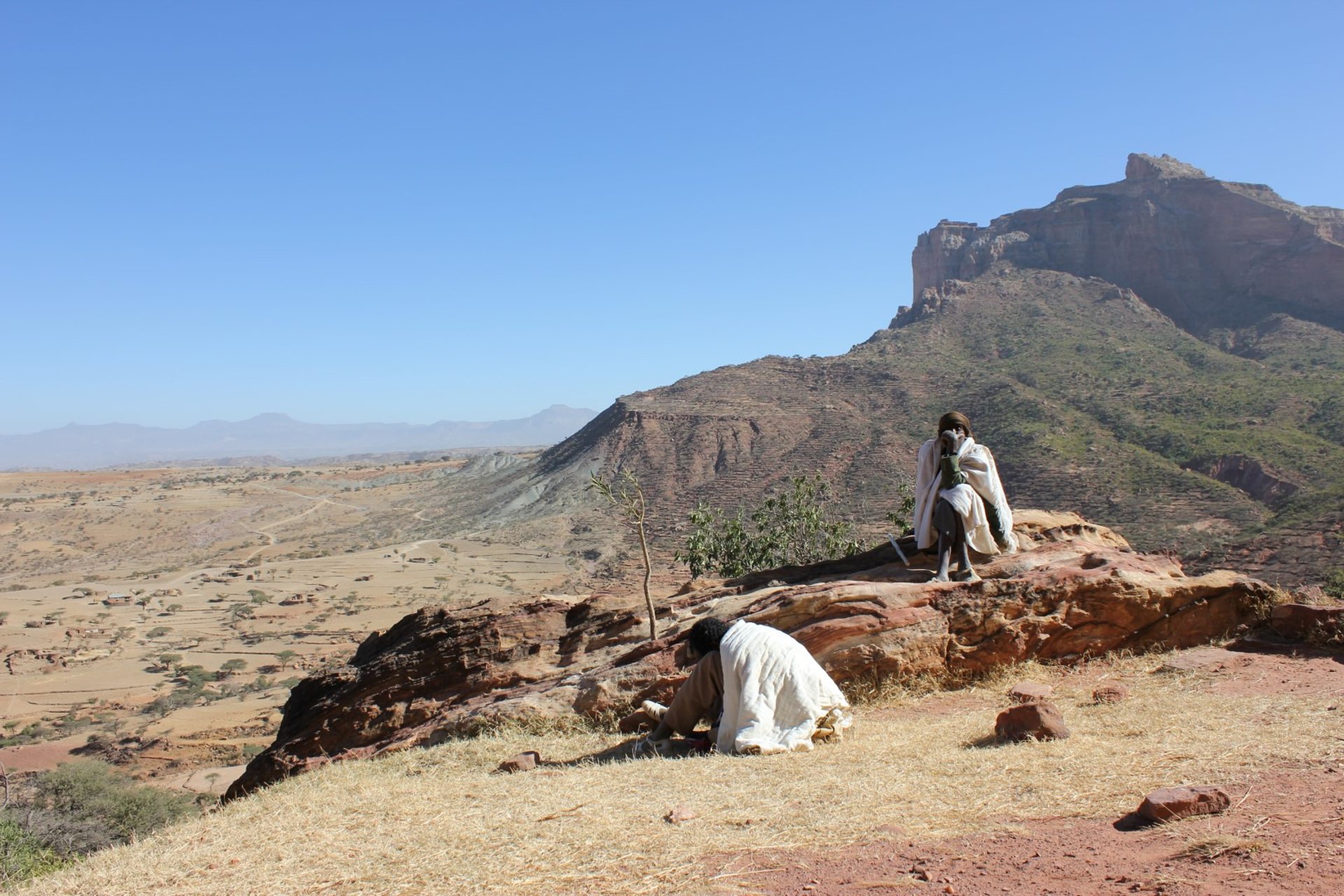
Adam's Country
2012, Tigray, Debre Damo, Adi Kesho, Abuna Yem'ata Guh
ETHIOPIAAFRICARELIGION
When I first got an eyeful of eastern Tigray, I had nothing in my experience to compare it with, except maybe the landscapes of American Westerns. Vast spaces opened up in every direction, punctuated by weird stone towers that seemed to me more like the spires of a fossilised city or the spikes of some giant organism than mere geology. When ancient Christians entered this country they found their cathedrals already waiting for them, and instead of stacking stone on top of stone as we did in Europe, they hollowed their sanctuaries out of the living rock. I joined a Dutchman and his Chinese fiancé that I'd met on the bus to split the costs of a guided tour by jeep. The road was a true destination in itself, with the great brown landscape rolling out around us.
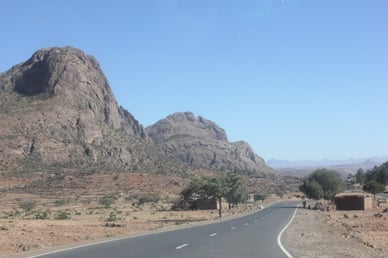
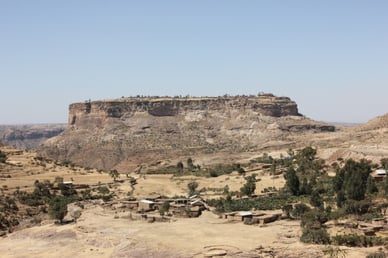


A few minutes earlier I'd been watching it happen to another traveller, quietly sympathising but not understanding. The need for something solid under your feet is a bit like the absolute demand for air, it's always there, but you don't hear it until you're under water. After some long seconds I started to feel the rope and hear the shouts of encouragement coming from above and below, and realised I was being asked politely but quite urgently to do some of the work. I fixed my eyes on the finish and hauled as best I could, and in a relative jiffy I was out of space and back on Earth, only higher. With a clap on my back from my friends and a kick of adrenaline in my step I coasted up a short path to the rim of the plateau.
The first target on our itinerary was Debre Damo, a monastery quietly commanding the surrounding plains from the summit of a flat-topped mountain. Once we'd arrived we started our ascent from the road by a staircase, until at length we came to where the shoulders of the mountain meet its thick neck. I had not done my homework, and didn't realise practically till I had a rope harness placed in my hands that the monastery was only accessible via a vertical rock climb. Now normally, I'm a person who enjoys heights. That little mantra plus a lack of time for any anxiety to boil over was enough to see me up the first five or so metres of fifteen, part climbing and part being pulled by custodians at the summit. But somewhere between five and ten I broke the famous rule - don't look down! My limbs stopped moving, and some powerful instinct that I'd never met before instructed me to stop - just stop, and go no further.
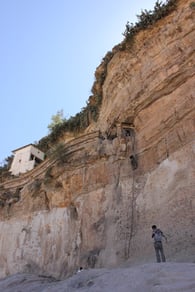

The monastery is a collection of neat buildings attended by lean monks in yellow cloaks. Women are forbidden to enter the precinct, and so it was just myself and the tall man from Holland left to wander. We strolled around the perimeter of the quiet plateau, meeting smiles from the younger monks and tolerant indifference from the elders. A small herd of cattle grazed peacefully, sure never to be disturbed by man or beast. After what seemed like a very short time we completed the circuit, confirming that the abseil back down would be non-negotiable. It's an island without an ocean, I thought, and wondered how the cows had gotten up. Maybe they carry them up as calves?

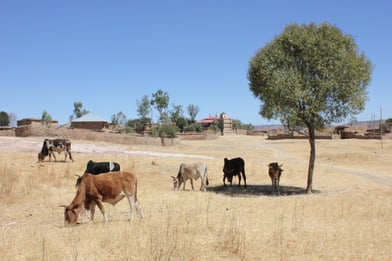
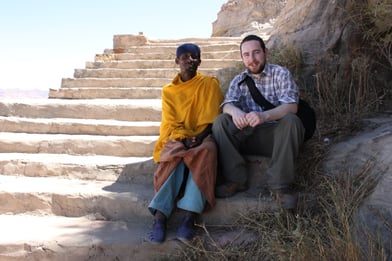
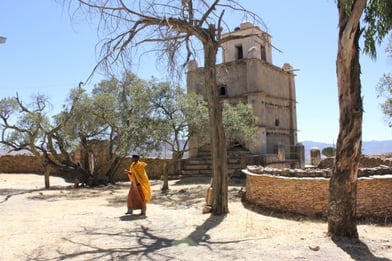




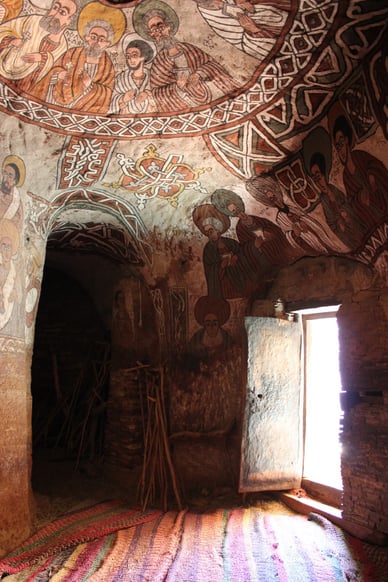
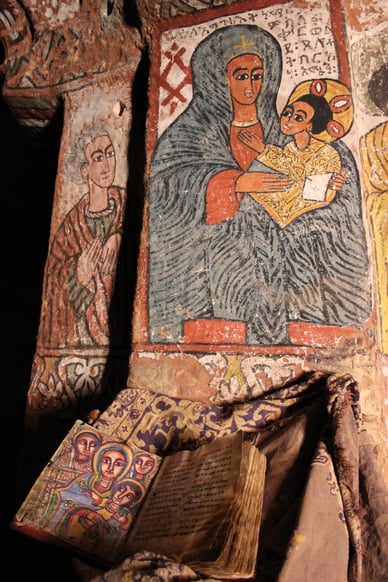


Our party always had a guide above and below us, good humoured men who apparently knew their profession well. They pushed us continually to keep a steady momentum, and though the physical danger was surely more serious than at Debre Damo, I managed to avoid becoming transfixed this time around. Ascending each level was literally thrilling. When I finally stepped over the threshold of the sanctuary onto a flat, carpeted floor, I felt like Jack fresh off the beanstalk, magicked into some other world. As my heart beat steadied I took in the smell of incense and the serene gazes of Ethiopia's saints, adorning the walls in soft hues of red, green and yellow. There was little time to linger though, and soon we had to brave the journey back down.
If we had gone home after Debre Damo, Tigray would already have been unforgettable for me, but the second day of the itinerary took things a step or several higher. Abuna Yem'ata Guh was probably the high point of my entire visit to Ethiopia, in more ways than one. After another long but high-spirited drive we left the road near a small settlement and made a short march towards our target, a row of tall rock pillars planted in a swell of the landscape. We had a little forewarning this time that there would be some climbing, but somehow I was caught unawares again nonetheless. The light trek from the vehicle at once became a steep slog, suddenly it was hands and feet, and suddenly yet again we were rock climbing over sheer drops - and this time without ropes. The vertical or near-vertical sections going from handhold to foothold were probably in reality quite short, but in my memory they are yawning chasms, by turns nerve-wracking and exhilarating.

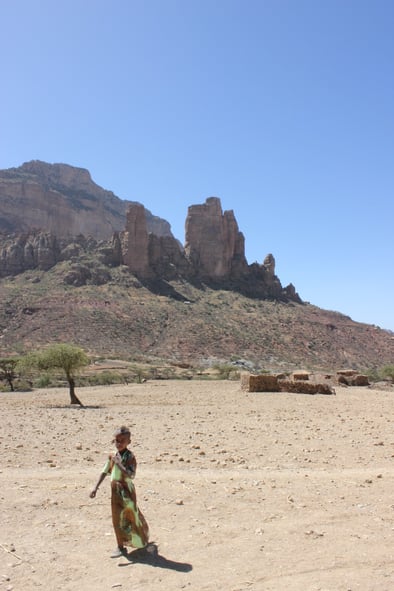


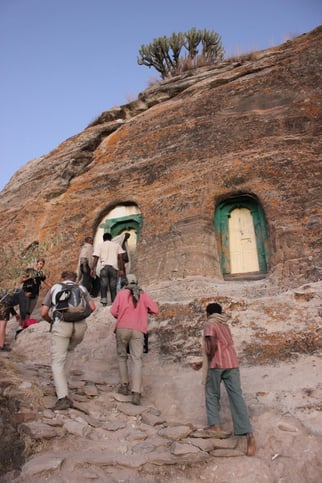
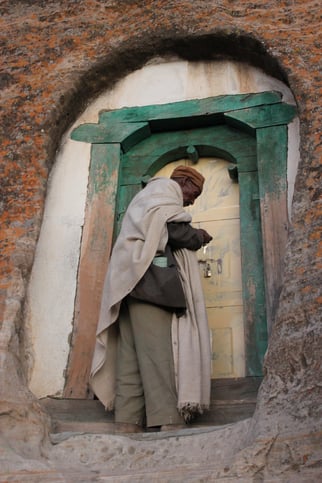


I have not yet mentioned our stop at Adi Kesho, which came after Debre Damo and before Abuna Yem'ata Guh the following day. Apparently among the oldest of Tigray's rock-hewn churches, I remember the site as small, secluded and atmospheric. There was no need for any derring-do in getting there, and it seemed to me just the right way to dial things down a little before our rest stop. Entering the precinct you meet several wooden doors set into a natural rock wall. Inside, a corridor holds the doorways to the churches themselves, painted again in bold colours that recall Ethiopia's national tricolour. A monk demonstrated an old locking mechanism for us, using an unusual key on a string to release a catch on the other side. The sun was setting on us by the end of our tour, and I remember it going down over the highlands and the moon coming up in its place, bright like a flood light. It seemed bigger to me than usual. I don't know if that was the proximity of the equator, some quality of the air or just my imagination. It covered the landscape in a soft pale light and it made me think about the oldness of the country. I permitted myself to get religious for a moment, and if you'll permit me again now, I pictured the first people walking up along the Rift Valley to Asia, to the rest of the world, and after many adventures, on up to that same lofty moon.
The Gist: Tigray (2012)
TRAVEL WARNING: Civil war struck Ethiopia beginning in 2018. Irish government travel advice can be found here.
ARRIVED: Tigray's attractions are located quite far from the major population centres and will be a challenge to visit independently. I found that the costs of a vehicle and a guide were quite affordable however when shared - I teamed up with two other travellers that I'd met on the bus to Axum. We were approached by the tour operator at the bus station and the cost per person was around €30 per person per day. We travelled for two days, starting in Axum, with one overnight stay in a small town.
SLEPT: Accommodation was arranged for us as part of the tour.
DID: The monastic sites of Debre Damo, Adi Kesho, and (my favourite) Abuna Yem'ata Guh.
LEFT: At the end of the tour my guide dropped me off on the road to Mek'ele and I completed the journey to the city by local share taxi. From Mek'ele I continued by local bus (booked in person) to Lalibela.

